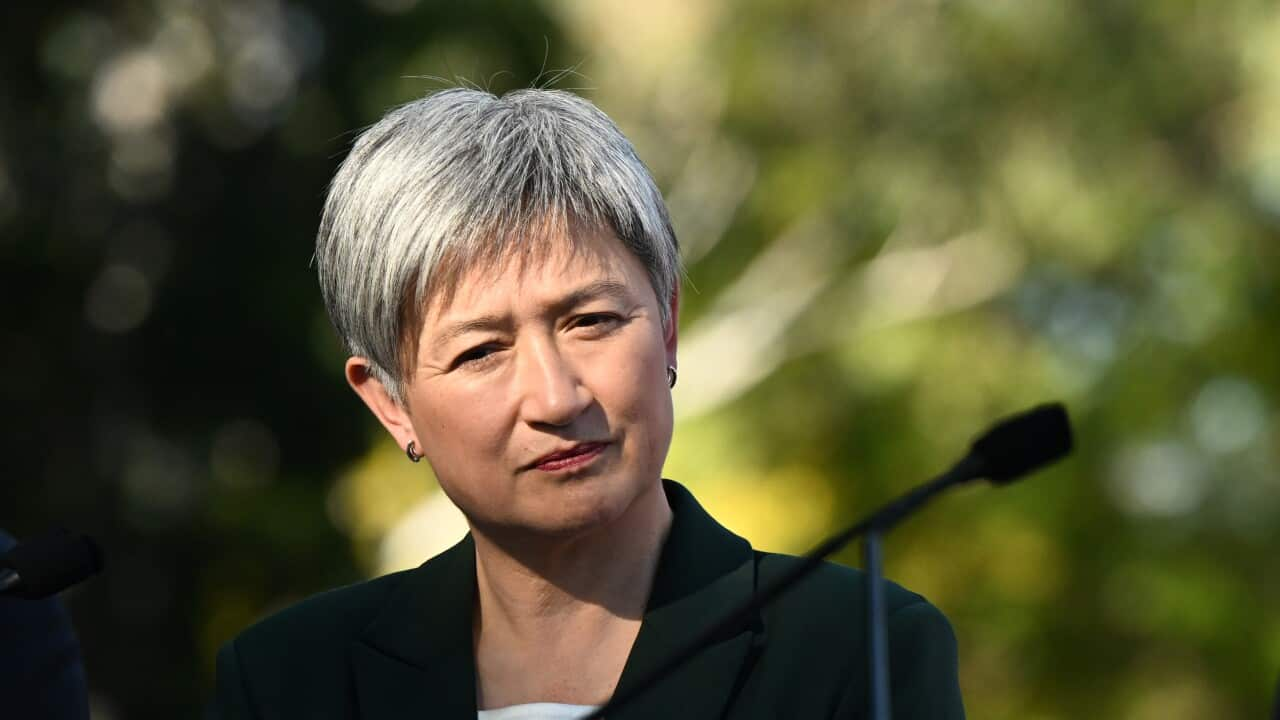Key Points
- The defence minister unveiled a $54 billion plan for what he said would be Australia's most lethal Navy fleet ever.
- The overhaul follows a major review that recommended urgent changes to the fleet.
- One expert said the upgrade is likely to have been partly caused by China's activity in the region.
The Australian government released its blueprint for a larger and more lethal Navy fleet on Tuesday, pledging $54 billion towards buying more smaller warships and boosting the strike ability of larger ones.
Defence Minister Richard Marles unveiled the government's plan to expand the current fleet as the defence force pivots to project its firepower deeper into the Pacific.
The changes would make the navy the most lethal it has ever been, he said.
"Australia's modern society and economy rely on access to the high seas — trade routes for our imports and exports and the submarine cables for the data," Marles said while unveiling the overhaul on Tuesday.
Australia’s navy chief commended the boost, saying it would be "the largest surface combatant force we've operated in generations".
"It will also be, in time, the most lethal," Vice Admiral Mark Hammond said.
A major review of the navy's surface fleet previously made 18 recommendations and implored the government to move quickly, noting that "Any delay will exacerbate the risk (and) lead to a level of unbalance."
Experts say the urgency was motivated by a changing security environment in the Asia-Pacific region, which previously saw the Australian government abandoning the premise that any major regional conflict would come with at least a 10-year warning.
Jennifer Parker, an expert associate at Australian National University’s National Security College, told SBS News that China’s recent activity in the region spurred the naval overhaul.
"The reason that the concept of a 10-year strategic warning time was removed is predominantly because of ," she said.
"China's aggression and extreme capability build out, with a lack of transparency, has driven the changed strategic outlook, which has driven the need to up-arm the Navy."
Parker also stressed that, beyond China’s activity, two other elements likely played a part.
"The fact that the Navy for 50 years has not been as large as it needed to be in terms of major combatants and a lot of evidence around that. And [the fact that] we took so long to work out how to replace the ANZACs."
The ANZAC-class frigates, which have been part of Australia’s naval fleet for decades, will receive a facelift under the blueprint, with new anti-ship missiles and long-range tomahawks.
The government will not move to extend the life of the ANZACs, however, saying the new general-purpose frigates would be more lethal and cost-effective given the navy can only crew fewer than six of the eight ships.
The overhaul will boost the combat fleet from 11 to 26 by the mid-2040s, alongside a further 25 "minor war vessels".
Many of these changes, in Parker’s view, are long overdue — with some being recommended decades ago. The fact that the government has finally decided to pull the trigger, she said, shows that they recognise “the world is changing."
"'Why now' is because the risk of conflict in the region has dramatically increased,” Parker said. "China is not the only factor, but it's certainly the driving factor [behind the idea] that we need to have a defence force that is ready and capable to deal with the potential of high-intensity conflict in the region."
When weighing up the likelihood of such a conflict, Parker said "it's not probable, but it's not unlikely".
"There is a real conversation to be had with the public about preparing for the chance of a major conflict in the region," she said. "But I think it's been avoided by the government and defence."












